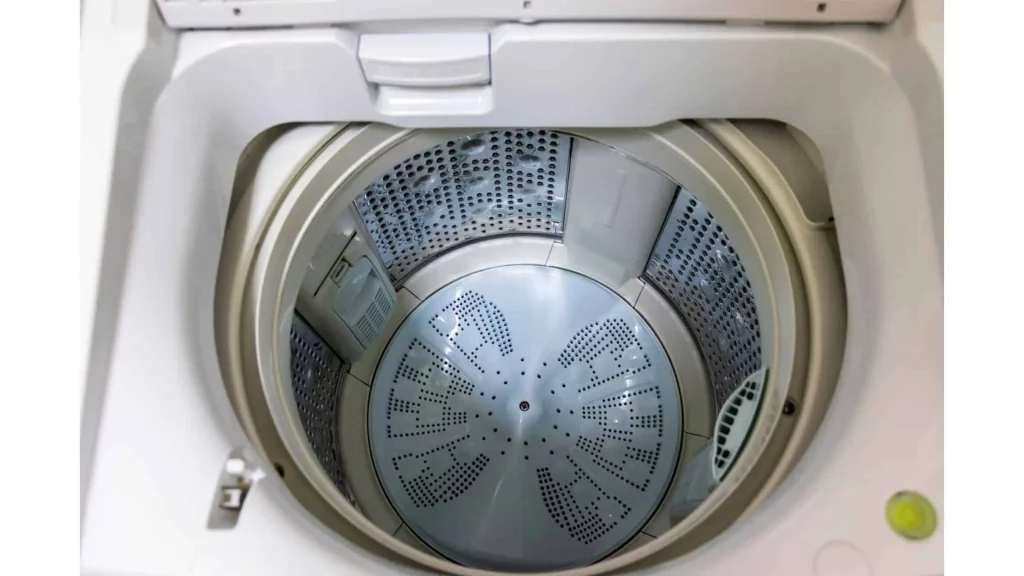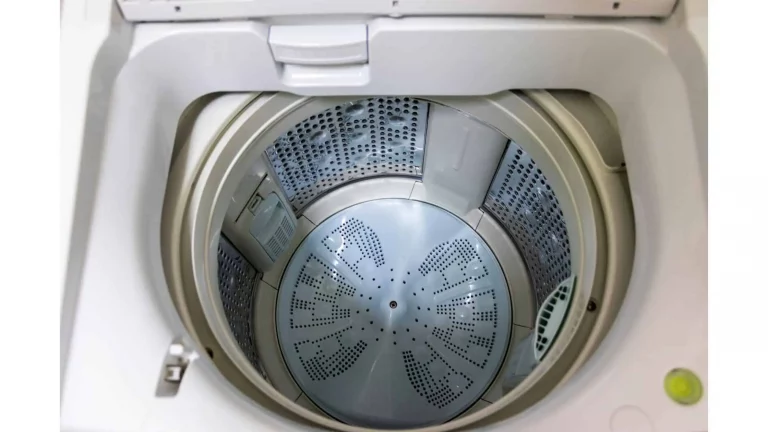Have you started seeing some undesirable sediments at the bottom of your washing machine and wonder where they come from?
They usually occur as brown flakes or flakes in your washing machine, especially in top-load washing machines.
Although it may be normal to see little sediments at the bottom of your washer after washing dirty clothes, too many sediments can lead to your washing machine not functioning well as it should.
These sediments usually leave your clothes stained and are often not easy to remove the stains because you will be using the same washer to clean them.
If you are wondering why you keep seeing sediments at the bottom of your washer, then read on.
The first question you may ask is, ”why is there sediment at the bottom of my washing machine?”.
Here is why there is sediment at the bottom of your washing machine:
Sediments at the bottom of washers are built up gradually due to the presence of minerals and deposits (hard water) in the water supply which may find their way into the washer, and also may be due to dirt that is contained in clothes during laundry.
In this article, we will be showing you how to remove sediments from your washing machine and how to prevent them from settling in your washer in the future.
Table of Contents

How do sediments get into my washing machine?
Generally, sediments are formed when different particles dissolve in water and accumulate over time.
These particles include sand, silt, clay, and other materials.
The water supply we receive is from rivers, streams, lakes, and others. Although the water we receive finally to our homes is thoroughly filtered, you may still find these sediments accumulating in the pipelines and thereafter finding their way to our homes.
This is especially the case if you use a borehole in personal your house where the water doesn’t go through such rigorous filtration methods.
So through your water supply, sediments are able to enter your washing machine despite having inlet filters that may have deteriorated.
How to clean sediment out of a washing machine
Having sediments build up in your washer isn’t a good thing.
As frequently as possible you need to make sure that your washing machine is free of sediments because they can hamper the performance of your washer or even cause damage to it.
Here is how to clean sediment out of your washing machine:
- Manually scrape out sediments from the bottom of your washer using a scoop or rag and a brush.
- Start a wash cycle by using the hottest temperature, highest capacity, and longest available cycle
- Add four cups of white vinegar to the hot water, shut the lid, and allow it to agitate for several minutes
- Open the lid to stop the machine and let it sit for about an hour so that the vinegar can perform its job and get rid of the bacteria hiding in the drum or tub.
- After running a full cycle with the vinegar, you can stop.
- Repeat the process if the washing machine is still dirty.
This is how to remove mineral deposits from your washing machine.
The vinegar does a fantastic job of removing any mineral buildup in your drum. It also softens any soap scum and other residues that may be building up within your washing machine and hoses.
Note: If you use a private well as your primary water supply source, you may want to install a whole-house water filter system to minimize the amount of sediments that can get into your washing machine.
Related article: How to clean hoover washing machine
What are the brown flakes in my washing machine?
The brown flakes in your washing machine are called scrud, which is the buildup of waxy flakes that occurs on a washer when the detergent and fabric softener comes into contact.
These brown flakes can build up in your washing machine and if not resolved can result in stains on your clothes and cause unpleasant odors in your washer.
He is how to remove the brown flakes (scrud) from your washing machine:
Method 1
- Drop 2-3 Dishwasher Tablets into a bucket of hot water to dissolve.
- Once it dissolves pour the water directly into the tub or the drum.
- Shut the door/lid and set the longest hottest cycle your washer has.
Method 2
- Put 2 x 75g canisters of Citric Acid directly into the tub or drum.
- Shut the door/lid and set the longest hottest cycle your machine has.
Note: Do not add Washing Detergent, Fabric Softener, clothing, or any other wash additives for whichever method you choose to use. Follow either method with a normal hot wash without any detergent to wash off any Scrud residues.
Conclusion
It may be normal to see small sediments at the bottom of your washing machine but when left to build up, it can cause your washer to malfunction or get damaged.
Always ensure you’re using clean water free of sediments to do your laundry. And have a routine cleaning regimen for your washer.

